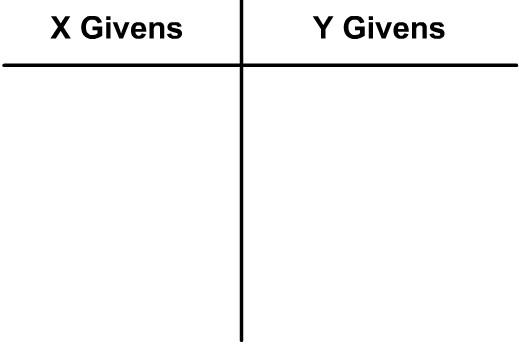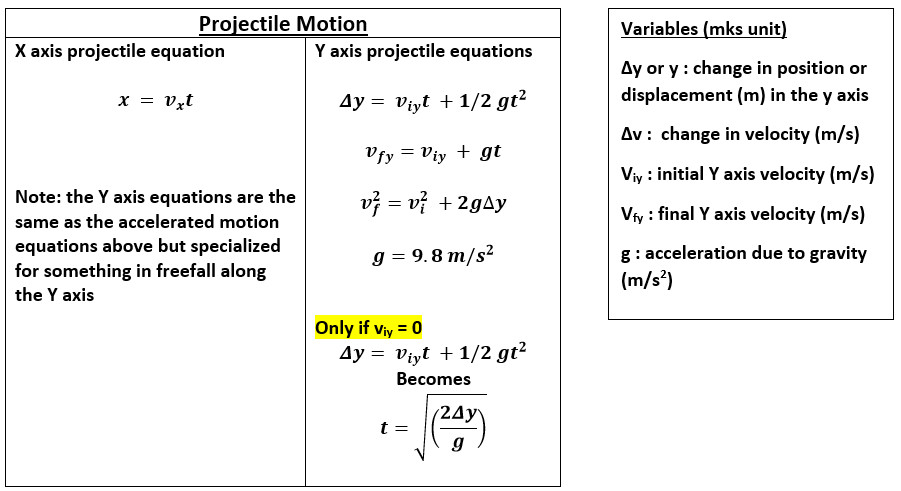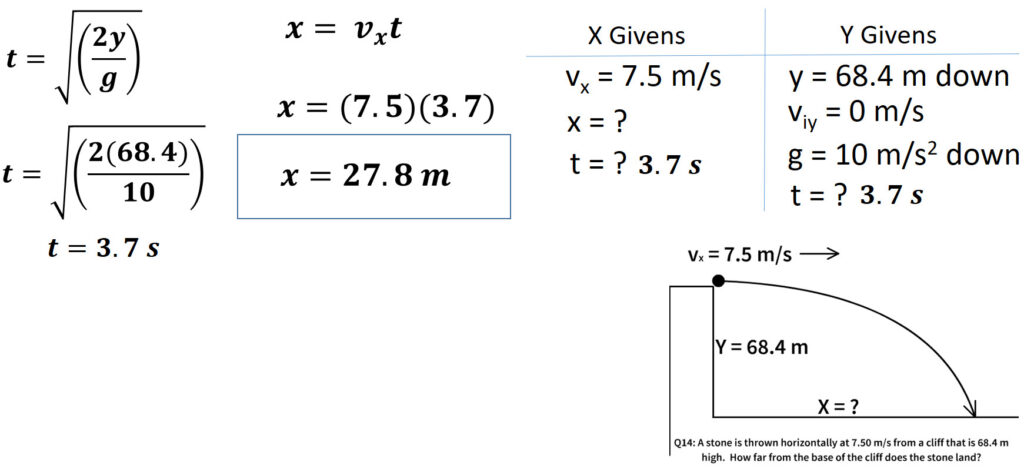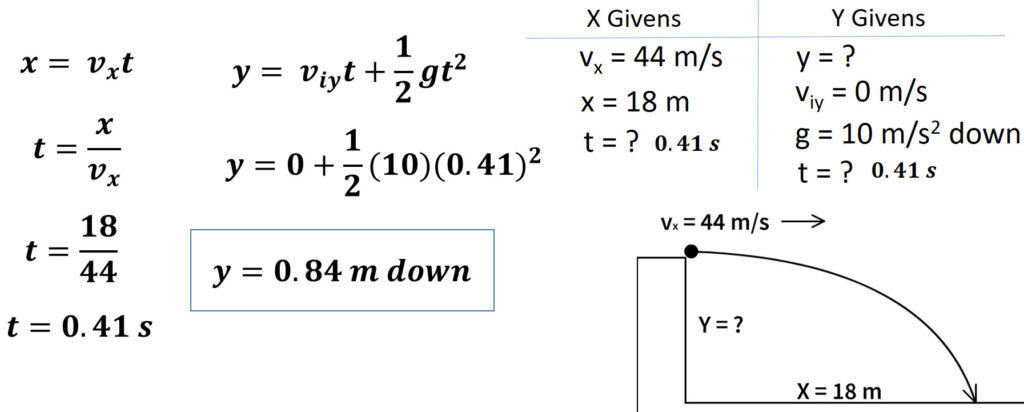Horizontal Projectile Motion Math Problems
Learning Targets
- Learn to solve horizontal projectile motion problems
- Learn to make a givens list and pick the right givens and equations to use
Watch the video found here or read through the lesson below as you learn to solve problems with a horizontal launch. The video includes the solutions to the problem set at the end of this page.
Create a Separate X and Y Givens List
- Since X and Y velocity is independent, start projectile motion problem with a separate X and Y givens list as seen here
Horizontal projectile motion math problems start with an object in the air beginning with only horizontal velocity. These problems often start with an object rolled off a table, being thrown horizontally, or dropped by something moving horizontally. When you see this create a separate X and Y givens list.

Projectile Motion Equations
Look at the equations used in projectile motion below. In the X axis you will only use our constant motion equation. Below you will see vx which is just velocity in the x axis.
In the Y axis you will use our common acceleration equations. Below they are just specialized for something in the air. Our normal variable a (acceleration) is exchanged for g (acceleration due to gravity). X is exchanged for Y since the object will be moving in the Y axis. Also the vi and vf are replaced with viy and vfy just representing that the velocities are only Y axis components.

Time Connects the X-Axis and Y-Axis Givens List
- Projectile motion problems end at the same time
- When the object is done falling it is also done going forward for our calculations
- Deciding how to find time with the X givens or Y givens is the first step to most horizontal projectile motion problems
Two ways to find time:
- If you have the Y displacement you can find time using Y axis givens. Don't forget that viy = 0 m/s and g = 10 m/s2 down
- If you have horizontal velocity (vx) and X axis displacement (X), you can find time in this axis
Horizontal Motion Problem Set
Watch through the video found at the beginning of this page and on our YouTube Channel to see how to solve the problems below.
- The video includes the introduction above followed by the solutions to the problem set
- Below you can check your final answers and then use the video to fast forward to where you need support
Example:
Q14: A stone is thrown horizontally at 7.50 m/s from a cliff that is 68.4 m high. How far from the base of the cliff does the stone land?
Q15: A baseball is thrown horizontally with a velocity of 44 m/s. It travels a horizontal distance of 18 m, to the plate before it is caught. How far does the baseball drop during its flight?
PROJECTILE MOTION PROBLEM SET
1. A stone is kicked 8.0 m/s horizontally from a cliff 80 m high. How far from the base of the cliff will the stone strike the ground?
2. If you launch a ball, moving horizontally at a speed of 1.12 m/s from a table that is 0.77 m tall, how far out from the table will the launched ball land?
3. A ball was kicked horizontally off a cliff at 15 m/s, how high was the cliff if the ball landed 83 m from the base of the cliff?
4. Josh throws a dart horizontally from the height of his head at 30 m/s. The dart lands 18 meters away, how tall was Josh.
5. Josh throws a dart horizontally from the height of his head at 30 m/s. The dart lands 18 meters away, how fast vertically is the dart falling?
6. A baseball rolls off a 1.20 m high desk and strikes the floor 0.50 m away from the base of the desk. How fast was it rolling?
7.A pelican flying horizontally drops a fish from a height of 8.1 m. The fish travels 9.3 m horizontally before it hits the ground. What was the pelican’s speed?
8. If you launch a ball horizontally, moving at a speed of 2.00 m/s from a table that is 1.5 m tall, how far from the base would it land?
Horizontal Projectile Motion Math Quiz
Links
- Learn More about Projectile Motion With Angry Birds
- Continue to the Forces Unit
- Back to the Main 2D Motion Page
- Back to the Stickman Physics Home Page
- Equation Sheet


